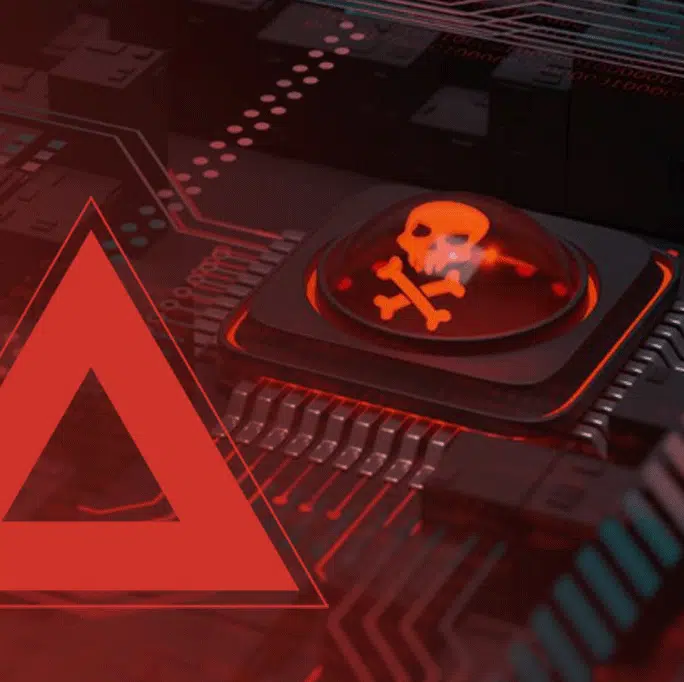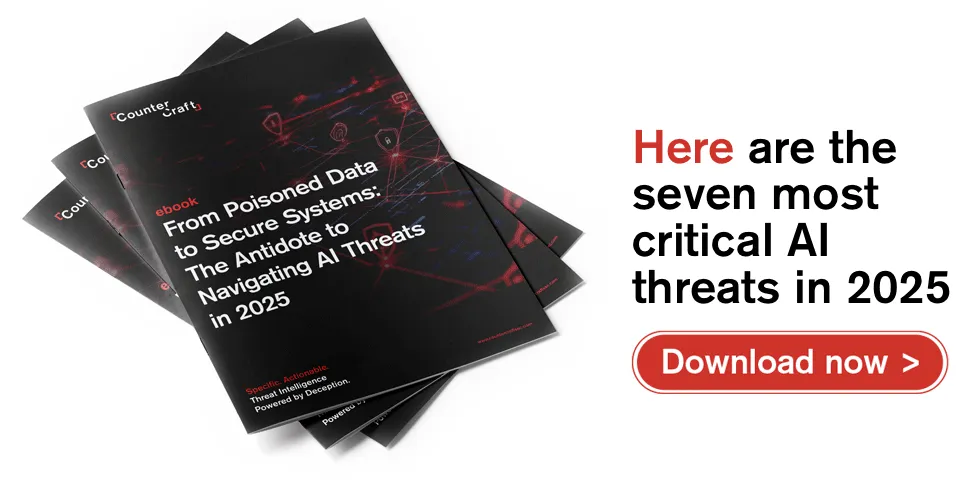Artificial intelligence has become a powerful double-edged sword in cybersecurity. While it drives groundbreaking defenses and automates threat detection, it also equips cybercriminals with advanced tools for executing faster, more precise attacks. Our new ebook, From Poisoned Data to Secure Systems: The Antidote to Navigating AI Threats in 2025, outlines the top seven emerging AI cybersecurity threats, explaining why organizations must rethink how they protect themselves in a realm where machines learn, adapt, and even outsmart traditional security measures.
Our experts have spent the last year tracking and researching how AI is being used by attackers and defenders in cybersecurity. Whether it’s AI-generated phishing campaigns that personalize attacks at scale or deepfake technology that can impersonate executives to authorize fraudulent transactions, they have found that AI-driven threats are changing the rules of engagement. This ebook is the result of their findings—a compilation of emerging AI-driven threats and tactics for 2025. In it, we outline the top attack vectors we see growing in both sophistication and volume, providing a strategic framework for defenders who need more than reactive measures to stay safe.
Crucially, the ebook highlights an “antidote” that can help organizations regain the upper hand: deception technology. Through carefully designed decoys, organizations can lure malicious actors and gather invaluable intelligence on how these AI-driven threats operate. By combining human expertise with AI-assisted defenses, it’s possible to transform AI from a weakness into a strategic advantage.
Why AI Matters in Cybersecurity
By 2025, AI’s influence on cybersecurity will be felt across every industry, from finance and healthcare to government and critical infrastructure. Here’s why: machine learning models can sort through massive data sets to spot anomalies, detect new attack patterns, and even predict potential breaches—all at speeds humans can’t match. This makes AI an indispensable ally for defenders racing to keep pace with a near-constant barrage of threats.
However, that same cutting-edge technology can be hijacked by cybercriminals. Attackers now exploit AI to automate hacking processes, craft near-perfect social engineering lures, and manipulate the foundational data that AI systems rely on—what we call “poisoned data.” Malicious actors can deploy “malicious AI models” that improve with every interaction, learning how to bypass standard cybersecurity filters more effectively.
In essence, the very algorithms designed to protect businesses can be manipulated, exploited, or even turned against them. This high-stakes tug-of-war—fueled by machine learning breakthroughs—defines the next era of cyber defense. It’s no longer enough to rely solely on tools like firewalls and endpoint protection. Instead, organizations must proactively identify where AI might be vulnerable, while also leveraging AI’s benefits, such as predictive analytics and anomaly detection.
What’s Inside the Ebook
Our expert team has compiled their research to identify the top seven most critical AI cybersecurity threats that organizations are most likely to face in the coming year. The ebook outlines these threats, including advanced phishing powered by AI-generated content, data poisoning that undermines machine learning accuracy, and malicious AI models capable of creating adaptive malware and deepfake scams, but it also includes the following:
- Across 16 pages of detailed research, you’ll discover how attackers exploit vulnerabilities in AI systems and corrupt training datasets, sabotaging everything from fraud detection to predictive analytics.
- Learn the telltale signs of AI-generated attacks, such as prompt injection exploits and automated reconnaissance tools, so you can act before your defenses are breached.
- The ebook also highlights proactive strategies to preserve the trust and accuracy of your AI systems. This includes tips for strengthening data integrity, improving anomaly detection, and leveraging advanced deception technology to turn attackers’ tactics into your advantage.
- Learn how deploying realistic decoy environments allows you to disrupt malicious behavior, even when AI-generated, while you also gather actionable intelligence to refine your security measures and predict future attacks.
If you’re looking for a clear, actionable guide to navigating AI’s dual-edged role in cybersecurity, this ebook is your antidote. Get it here.
Deception Technology: A Proven Antidote
To combat these growing threats, the ebook highlights deception technology—a cutting-edge approach that uses realistic decoy environments to lure and contain malicious actors. These controlled spaces allow defenders to gather real-time, actionable intelligence, such as Indicators of Compromise and Tactics, Techniques, and Procedures, enabling them to neutralize threats before they endanger critical systems.
Ready to Learn More?
From automated attacks to corrupted data and deepfake-powered cons, AI-driven attacks are the biggest, fastest-moving threats to cybersecurity we’ve ever seen. Yet with the right combination of high-level tools and strategic planning, your organization can do more than survive – it can thrive in this new reality.
Want the complete picture—and a clear roadmap for action?
Download the ebook “From Poisoned Data to Secure Systems: The Antidote to Navigating AI Threats in 2025” and learn how to:
- Detect AI-driven attacks early with advanced anomaly monitoring.
- Safeguard machine learning data against poisoning and manipulation.
- Leverage deception technology to capture and analyze attackers’ every move.
- Build strong defenses that keep pace with rapidly changing threats.
Take the first step toward fortifying your cybersecurity plan for 2025 and beyond.

